I've always loved history, and the story of "The Iliad" was one of my favourite classic works that I read at university. Classic western history has always been a favourite of mine, and the stories of the Greeks and the Romans and mythology always fascinated me. This exhibition explores the story as told by Homer (but probably re-told through the ages by great story-tellers before being written down by Homer) to the war between Greece and Troy. It tries to separate myth from reality. The exhibition seem to be accept that Troy did exist but attempts to look into the aspects of the suspected location and archeological findings.
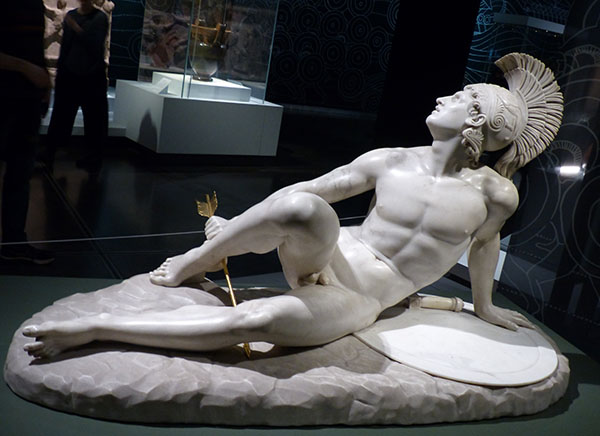
Two of the items near the beginning of the exhibition were a bust of Homer (obviously, no one knows what he would have looked like or even if he did exist) and a decorative vase with Achilles killing an Amazonian woman.
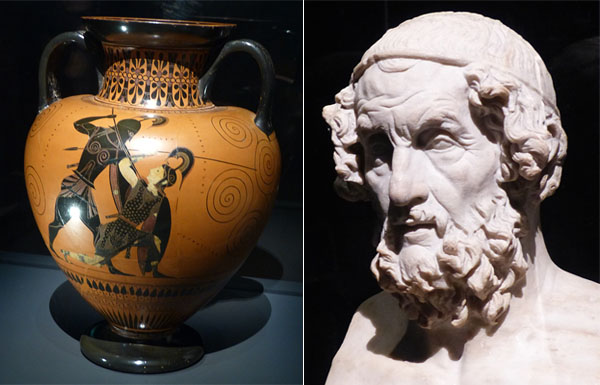
Achilles defeats an Amazon; a bust of Homer
The Trojan war starts off with Discord tossing in a golden apple and Paris of Troy picking Aphrodite as the most beautiful between the goddesses (Hera, Athena, and Aphrodite). Aphrodite promised Paris the most beautiful women in the world, Helen of Sparta. This conflict between the gods caused the gods to choose their own sides in the war to help in the battle between the humans.
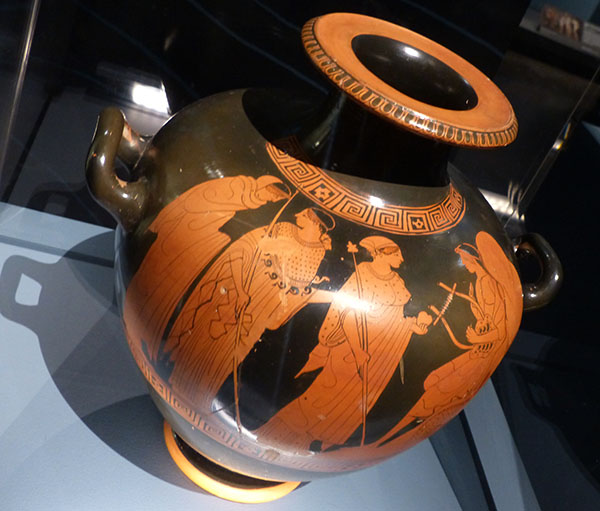
Paris judges the goddesses
The story of the war is depicted on decorative vases, room murals/mosaics, and carvings. Stories or parts of stories are often illustrated or produced in artwork. Many of the decorative items featured the judgement of Paris and the removal of Helen. The relationship between Helen and Paris is told through the artwork. It's sometimes depicted that Helen was upset at being used as a bargaining chip and forced to board the boat to Troy. It's always the gods and their interference depicted in the artwork. In the image below, Paris falls in love with Helen who admirers herself in the mirror, with the gods playing a role in the relationship.
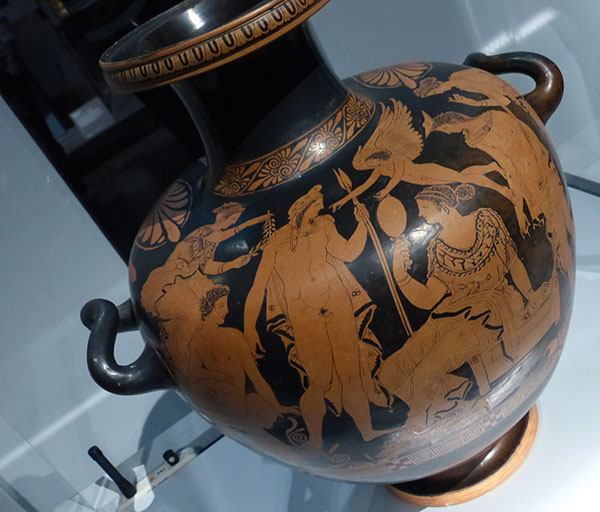
In the below vase, the two meet but Aphrodite is there to ensure success. An image of a dog chasing a goose at the bottom of the drawing probably depicts how the gods see humans as pets/playthings.

Other vases and artwork depicts scenes from the story, such as an upset Achilles who refuses to fight after he has to give his trophy girl Briseis (yes, these stories depict women as gifts) to Agamemnon, the commander of the Greek army, requests. Odysseus is sent in an attempt to get Achilles to fight by making promises of gifts and the return of Briseis, but it fails; the army are not doing too well without him.
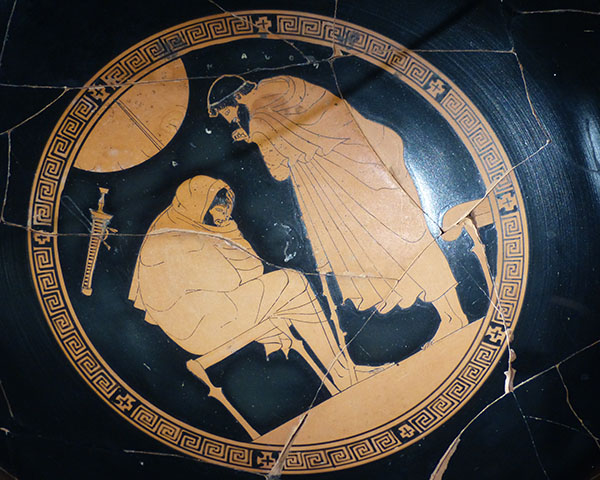
Achilles returns to battle and is spurred by the death of his friend Petroculs. To prepare for battle, Achilles is fitted with new armour as depicted below.

To avenge the death of his friend, Achilles kills the man who killed him, Hector. He then drags the body around the grounds, which causes a lot of anger with the gods. The body is undamaged, however. The below image depicts the chariot dragging the body, and the left image depicts King Priam pleading Achilles for his son's body.
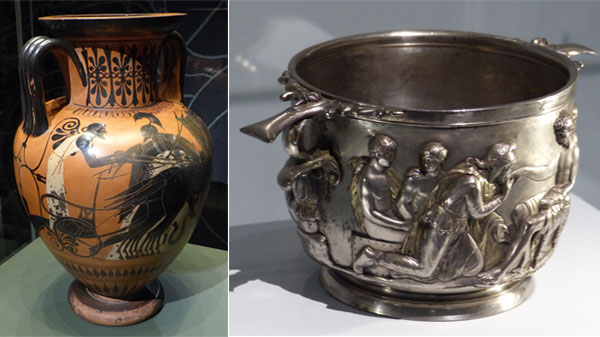
The Trojan horse signals the downfall of Troy. The Greek warriors hide inside the horse as it is pulled into the city walls of Troy.
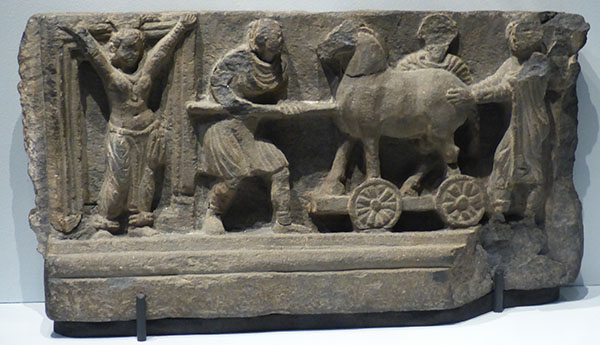
Cassandra, a priestess and daughter of King Priam, warns of the danger but is not listened to (in another common theme of women not being listened to). When the soldiers exit the wooden horse, they open up the gates of Troy and the city is seiged. The below image shows Cassandra being attacked as she tries to hold onto a statue of the goddess Athena in the temple. King Priam is also killed, marking the end of Troy.
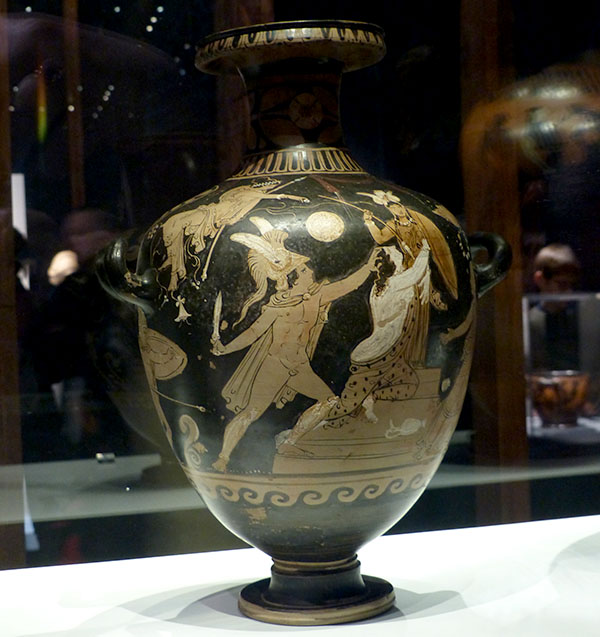
Spin-off story Aeneas is also shown in the exhibition as the family that flees the burning of the city of Troy. They flee to Italy and are the mythological founders of Rome and depicted where Rome was to be founded with the suckling wolf and Romulus and Remus.
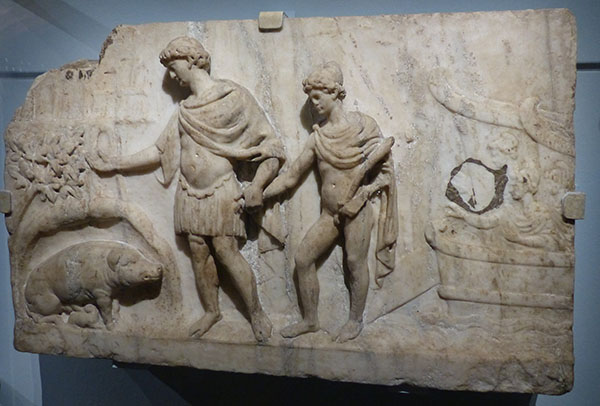
Another part of the exhibition mentions "The Odyssey" and the adventures of Odysseus showing scenes from the journey, such as the sirens in the sea, the witch Circe, and the cyclops. "The Odyssey" is the story of the warrior who wishes to return to his home in Greece, but the gods are upset with the Greeks after the city of Troy is seiged and how they sacrificed Polyxena (youngest daughter of King Priam) like an animal, so the winds required to sail are made quiet by the gods due to this. This also means that many years pass before Odysseus can return to his family and be reuinted with them.
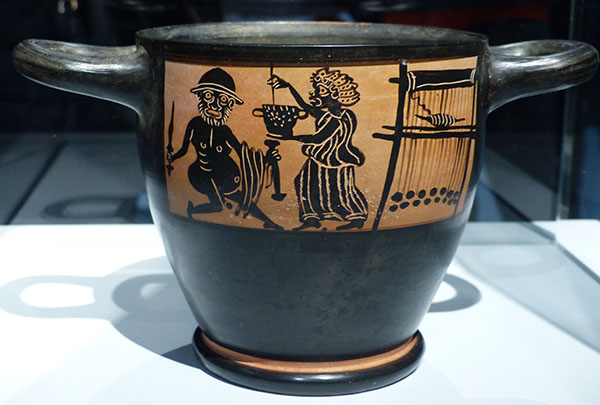
Another part of the exhibition showed some of the earlier books of the stories. After this, the exhibition explored the location of Troy, which is thought to be called Ilois (located near Bounarbashi). The map shows some of the key players of the war and where the Greeks sailed to Troy on the coast of modern-day Turkey.
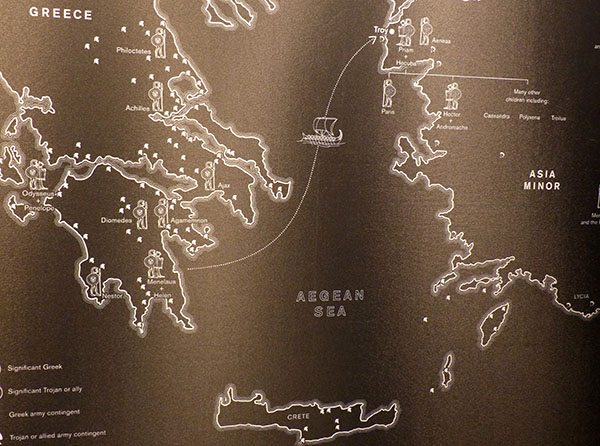
The settlement at Ilois is escavated after finding some artefacts. There is also evidence that the city had burnt, but this was before the time frame mentioned in the Homer story. The discovered settlement was also thought to be smaller than Troy should have been, and some of the artefacts possibly came from other places to make the discovery have greater appeal, such as some gold items known as "Priam's treasure".
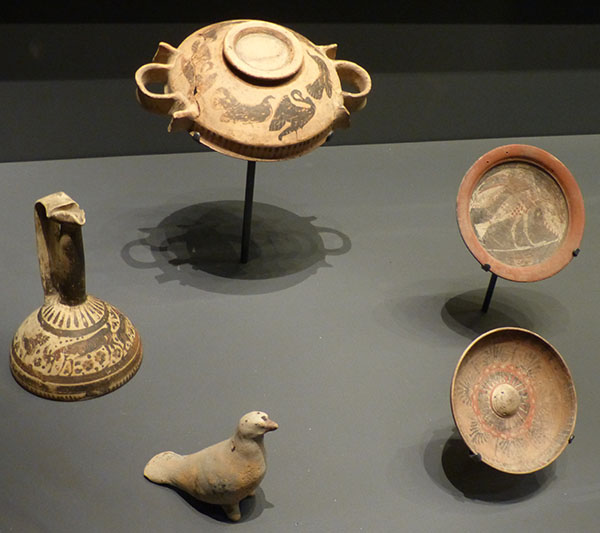
Some of the items found were double-handed cups and vases with three-legs. These date from the time that the Trojan war was said to have taken place. Some of the jars feature animals, and others are thought to feature the goddess Athena.
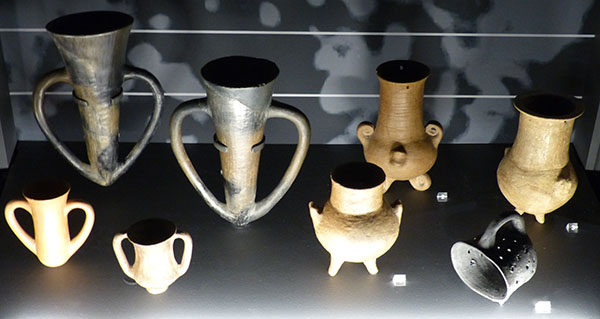
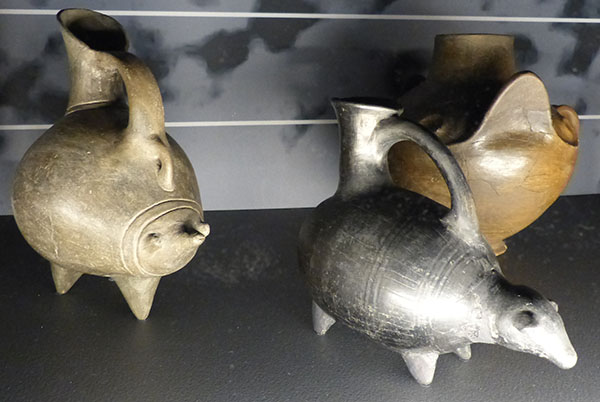
There were several different versions of the discovered settlement of Troy, and these were examined and given a time period. Earthquake and fire were though to have destroyed the city at some point, and the only time frame that the Trojan war could have happened with the height of Mycenae in Greece was from 1400-1200BC. This places the version of Troy from 1750-1180BC to be a likely period where the war was fought; 1300BC marked an earthquake in which the city was rebuilt, so it could have been before or after this occured. The next version of Troy follows from 1180-900BC and marked a new wave of people from Europe settling here and moving across the Mediterranian area; there is evidence of a fire and war that happened before this phase of the city.
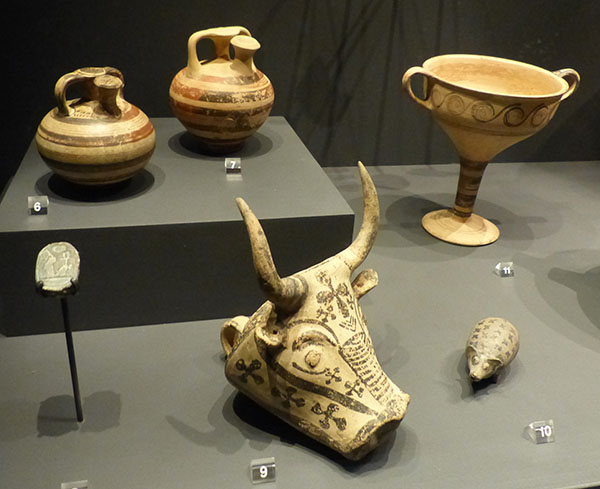
The above images depict examples of pottery found at the Greek city of Mycennae, a very rich and war-like city. Tablets were found with information mentioning Wilusa, a kingdom in western Turkey, and a leader Alaksandu who ruled from 1295-1272BC. These name closely matches an alternative name for Paris.

The Trojan Horse
The remainder of the exhibit depicts how the stories were told in more modern times and how they inspired other works, such as a story by Shakespeare and modern films. Parts of the story were also illustrated, painted, sculptued, and created.
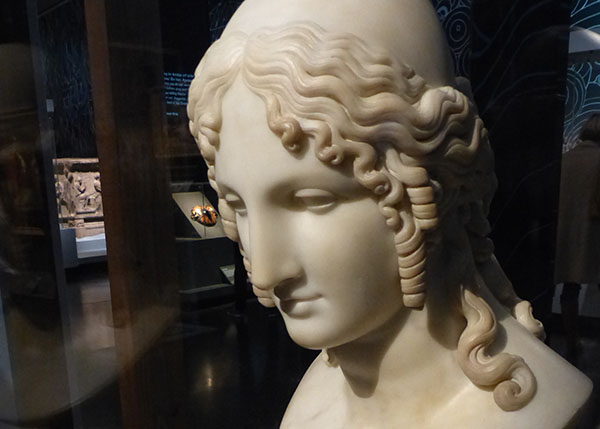
Helen of Troy by Antonio Canova
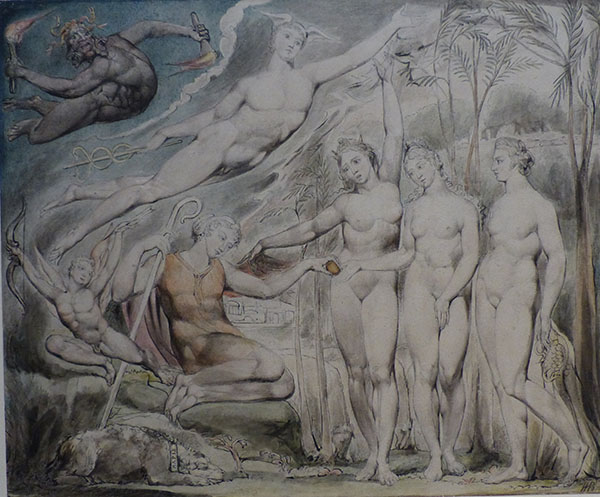
The Judgement of Paris by William Blake
Another section focuses on the women of the story, such as Cassandra and Helen.
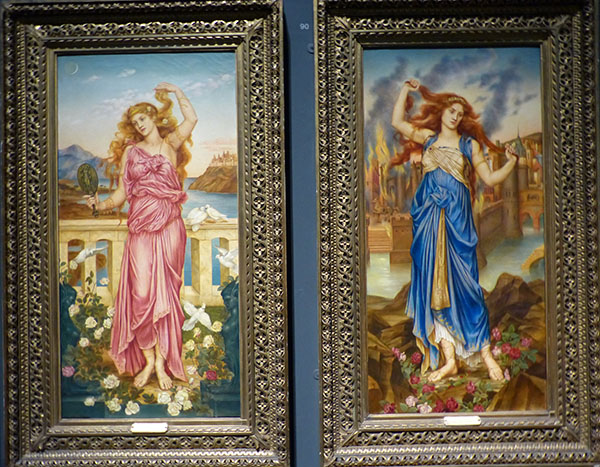

The golden jewellery was said to have been found in Troy and is part of Priam's treasure.

The exhibition of Troy: Myth and Reality was held at the British Museum from the 21st of November until the 8th of March. I finally managed to see the exhibition on the last day of it because it seemed to be a very popular exhibition and was booked full on the weekends and other peak times.


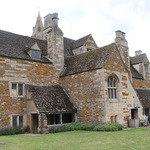
Leave a comment